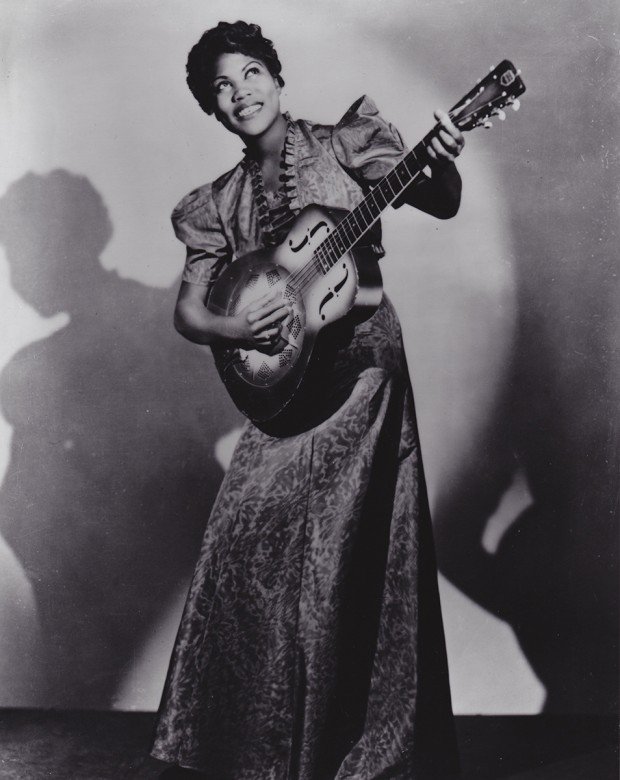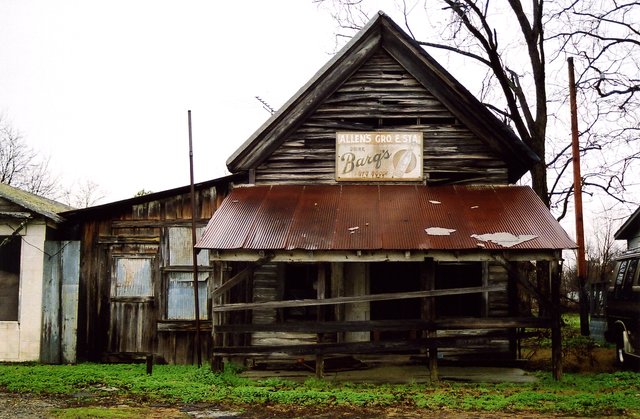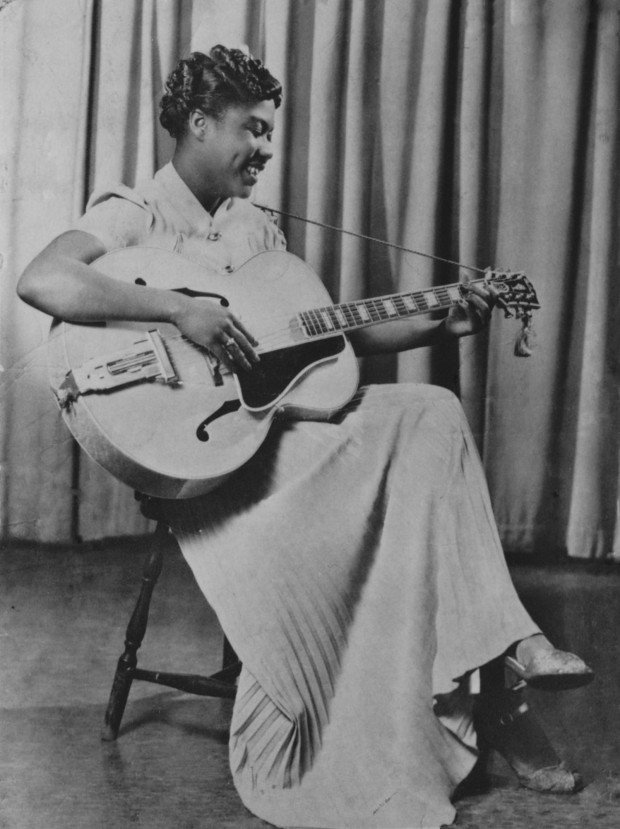A Hundred years since Rosetta Tharpe, the Godmother of Rock n' Roll
Some ephemeris should force us to confine ourselves. Some ephemeris, so different from those that national events point out to remind us that we are vassals, deserve sacredness and intimacy.
A few months ago, on March 20, 102 years after the birth of Sister Rosetta Tharpe (1915-1973), who was called the Godmother of rock and roll . The title, it might be argued, contains a paradox: a gospel singer , the purest Christian-evangelical music, is presented as a prophet of devil music, as they defined rock in its earliest years from pulpits and congregations most obfuscated therefore sexual exaltation. It is a sensible contradiction because, as sinners know, God and the devil walk hand in hand.
Sister Rosetta was singing 'amén' and at the same time she was an indomitable beast, all sweat and brutality, instinct and delirium. They could erase Chuck Berry , Little Richard, Elvis Presley and Bo Diddley from the annals . Sister Rosetta predicts, contains and surpasses them .
Allen's Grocery, Cotton Plant Arkansas
1. The place. From the sky you can know everything about Cotton Plant, Arkansas (USA): a rural countryside enclave in the middle of the emptiness, two county highways, the relentless traces of cotton and corn plantations ... The village and its thousand souls of 1915 had only two options to combat the monotony of prairie tyrants, multiplied by a leaden sky and the masonry of red bricks of the shacks: to be carried away by the tyranny of the subsistence chains or to dedicate themselves to pray.
2. The river. About a hundred miles in a straight line to the east flows, very slowly because it sniffs the mouth of the Gulf and wants to delay it, the fabulous Mississippi, the river-uterus of all music. An early twentieth-century hiker bordering the channel to the south could cross, if fortune was given to him and go to the most indecent wooden gambling halls and bad homemade whiskey of the road , with Charley Patton , the howler, or Robert Johnson , the friend of the devil.
3. The Old Religion. The parents of the girl Rosetta Nubin, born on March 20, 1915 in the village of Cotton Plant, were bare landless. Her father, Willis Atkins, is only known for his penchant for singing, while bending his lower back, he ripped his hands to tear off the cotton capsules. The mother, Katie Bell Nubin, also sang, but especially in the offices of the Church of God in Christ , a pentecostalist creed that denies predestination and admits that the smile, the hymn and the cry are outbursts of consecrated life , vehicles for be trained before the Great Tribulation. The woman, whom they called Mama Bell, he played the mandolin and the guitar. When he let one of the two instruments rest, Rosetta scratched and struck the strings. At the age of six she was already accompanying the mother playing the guitar.
Sister Rosetta sings and her mother, Katie Bell, holds the guitar. Photo: Charles Peterson
4. The hymn. The first book to be printed in British colonial America was The Whole Booke of Psalms Faithfully Translated into English Meter (1638), a compilation of religious hymns. The play was a primary bestseller and set fire to singing as a communal form of prayer. When tradition was crossed with the secular uses of slaves brought from Africa to be exploited by the good Calvinist Christians the gospel was born, from the Anglo-Saxon word gōdspel , word of God, an extremist transformation of religious hymns based on insistent percussion, impulsive exhortations, perfect palms and improvised dances. The pattern is call-and-answer and the pentatonic scale, relentless, modern. Where white Christians sway in lullabies, blacks groan to ecstasy . The germ of jazz, the funk and hip-hop was born in the chapels.
5. The miracle of the voice and the guitar. Mama Bell and her daughter did for years the circuit of the Pentecostal congregations - the Church of God in Christ allowed the feminine apostolate. They were partly sermon performances and partly gospel discharge. They became so well-known that they advertised weeks in advance. Signs stuck on the telegraph poles announced Rosetta as "the miracle of voice and guitar." In 1934 they moved to Chicago. Rosetta married at age 19 with a pastor, Thomas Thorpe, but the marriage did not turn out and they separated. Without ever explaining the reason, she adopted as a stage name a transformation of her husband's surname: Sister Rosetta Tharpe. In 1938 they settled in New York.
6. The first rock and roll? After recording some discs with great orchestras that concealed the fierceness of her voice and were forced by ladino contracts to sing in the circuits of night clubs - which originated a certain scandal among the purists of the religious music -, Sister Rosetta decided by to return to the simplicity of the gospel and in 1944 recorded Strange Things Happening Every Day, a spiritual without dressings, dominated by the guitar and the scream. In 1945 the song became the first gospel song to sneak into the most controlled lists of racial successes - also hit parade were segregationists - from Bildboard magazine . The theme, syncopated ,evasive, passionate, danceable, sensual, even ambiguous , is among those mentioned as possible precursors of a genre that still had no name but was born from the adherence of blues, rhythm & blues , country and bluegrass: rock and roll , the most important music of the 20th century.
7. Instinctive palms of the English. Adored by Elvis Presley, Little Richard, Johnny Cash and Jerry Lee Lewis ("This woman sings rock and roll ... well, she sings religious music but it's rock'n'roll: she trembles, she jumps, she hits the guitar!"), Rosetta Tharpe enjoyed of a great fame after World War II. In 1951 she married her agent, Russell Morrison, and sang after the ceremony, still in wedding dress, before 25,000 people who had paid admission for the wedding and concert. During the years of rock and roll fire, the style she had helped to create, her popularity plummeted, but she managed to overcome it by touring Europe, where the interest in black music of the United States was intense in the early 1960s. In 1964 she participated in a television program recorded at an abandoned train station in Manchester . Some say that it was the first time that the icy English public instinctively knew how to follow the rhythm of a gospel with palms. Rosetta, in her clear cloth coat of Sundays, left them stunned and in a state of grace.
Sister Rosetta Tharpe in the late thirties. Photo: Roxie Moore
8. Tomb without a tombstone. The fiery singer and guitarist's career was interrupted by a heart attack in 1970. She overcame the issue but developed diabetes and had to amputate her leg. She died after a second heart attack, on October 9, 1973, at age 58 . She was buried in an unnamed tomb in Philadelphia, where she had lived since 1957.
9. Tomb after a documentary. After the production and broadcast in 2014 of the documentary directed by Mick Csáky Sister Rosetta Tharpe: The Godmother of Rock & Roll there was a charity collection to place a small funeral tomb in the place where the remains laid of the woman who knew how to pray, shouting Amen.
10. Epitaph. The words that were inscribed on the tombstone, although belated, are adequate: "I could sing until I made you cry and then sing until you danced with joy. It helped keep the church alive and made the saints happy ."
All my image sources are from Pinterest and Google, and my video from Youtube.
If you liked this post please show us your support with an upvote and resteem, and if you would like to share your opinion with us please don't forget to leave a comment. Thanks for reading!




@royrodgers has voted on behalf of @minnowpond. If you would like to recieve upvotes from minnowpond on all your posts, simply FOLLOW @minnowpond. To be Resteemed to 4k+ followers and upvoted heavier send 0.25SBD to @minnowpond with your posts url as the memo